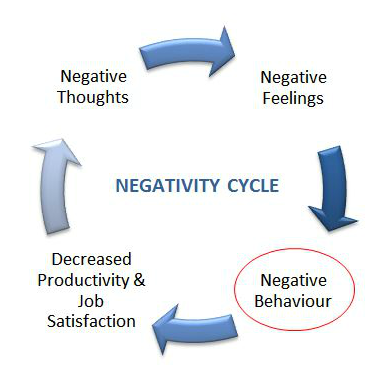
Hiring a boomerang employee generally has a high returns on recruiting investment, as the cost to re-hire a boomerang employee can be a third to two thirds of the cost of hiring a new employee. However, whilst there are benefits to re-hiring a previous employee, there are also some drawbacks. Companies should always have a rehire policy set in place for potential reappointment of past employees.
Boomerang employees generally fall into the below categories:
- Top performers who voluntarily left
- Employees who were in key positions
- Valuable workers with key skills, contacts, or experience
- Promising interns who failed to return
- Retirees who may have realised they weren't ready to retire
- Top finalists who accepted another job
- Long-term consultants or contractors
So what are the benefits and drawbacks of employing past members of your staff? The drawbacks are simple:
- Employees can potentially return with baggage they left with, including any bad habits they may have formed on the job.
- Returning employees may not get along well with employees that have been hired in their absence.
- Employers have to fully consider the position that the rehired employee will assume. The workforce dynamic may have changed, such as a former junior employee being higher up the ladder than the boomerang employee.
The benefits of rehiring past employees far outweigh the drawbacks for most businesses:
- Often when an employee re-joins a company, there is no need to train them like one would with a brand new employee. It may be necessary to give some training on new policies or projects, however in general re-hiring turns out to be less expensive and time consuming than hiring a new individual.
- During a boomerang’s absence, there is also a good chance that they may have learnt new skills and strategies, achieving success in a different situation. They will have likely made new connections and expanded their network which in turn is a bonus to your company.
- There are no recruiting costs with a boomerang employee which means employers know their skill set and have no need to hire an agency to recruit on their behalf. This also saves on time, as it is often the case that companies hire new employees only to find out they are just not what they seemed.
- Boomerang employees can be valuable to an organization because they already understand procedures and the culture within the business. They also know the habits of other employees and structures which have been put in place. The procedures are familiar and so it becomes a benefit to the business, whilst also potentially bringing a fresh perspective from the outside.
- Generally when a company rehires a previous employee, loyalty from that employee increases. This may be because they have seen other business practices and realised they weren't all they seemed. The boomerang employee finds that they want to come back where they prefer it, and in turn becomes more loyal to the company and the employers that they work for.
Hiring boomerang employees shouldn't be the chosen strategy due to it being cheap and easy - the decision to re-hire an employee should be based on a good role fit and that the employee has the right skills for the right job. Not every employee who voluntarily left is a positive candidate for bringing back into the company.
Consider the below if deciding to hire boomerang employees:
Stay in Touch
It can sometimes be tough to accept that a top employee has decided to move on, and often personal feelings can get in the way of professional decisions. If the employee has a good track record then an employer should offer to be a reference for any future opportunities they may have. Employers should keep in touch with past employees and make sure to catch up a couple of times a year. It is important to keep their contact details on file and keep them in the loop with company announcements via email. Even if the employee isn't re-hired, they could potentially be a new client or refer someone to the business due to positive relationships with the company.
Be Thorough when Rehiring
Boomerang employees that only left the company a few months prior don’t necessarily have to be re-interviewed and quite often, simply having a conversation with the leadership team will suffice. However, for those that have been gone for more than a year, a formal interview process is beneficial, as company factors may have changed after a year — staff, culture, processes, etc.
Within any company, employers aim to ensure they are hiring the most qualified people and so it is important to approach potential rehires in the same way as unknown candidates. Focusing on positive performance records, in any company they have been hired with, as well as professional references, along with skills tests if needed, ensures their knowledge and abilities are up to standard.
The formal interview also enables a company to revisit the employee’s exit interview and look at their reasons for leaving in the first place. Any previous issues mustn't be overlooked, because chances are if they felt it once, they can feel it again. Asking questions such as "What do you think you can offer our company now that some of our priorities and service goals have changed?" confirms that the employer is not taking the re-hiring process lightly.
Debrief Returning Staff
As touched on in the previous point, if a boomerang employee has been out of the returning work place for a considerable amount of time, they may need to be brought up to speed on new structures within the company. The person who they report to may have changed, or if they are being hired for the position they held before, certain responsibilities may have changed. Employers must encourage a returning employee to ask questions and provide them with a go to person in their department who can offer assistance if need be.
Boomerang employees may need to be retrained. At this stage of re-employment, managers should be over communicating with the employee as well as ensuring that they know there won’t be any special treatment.
Prepare Current Staff
As soon as the decision is made to rehire an employee, team members must be told immediately to avoid upsetting existing, loyal staff as well as allowing an employer to be notified of any potential hesitations or concerns. Managers should work especially closely with the group of employees to which the boomerang employee is returning and ensure that there is open and honest communication within the workplace.
Monitor Progress
Often, boomerang employees are reluctant to ask for assistance when they need it, for fear their employer will question the decision to bring them back. To ensure the employee is happy, managers must check in regularly to show interest in their progress and ask of any concerns they may have.
Transitioning back into an organisation may be slightly uncomfortable at first for boomerang employees, especially if there's been a lot of restructuring or staff changes since they left. Being considerate to returning employees’ needs can lead to them adapting more quickly and feeling positive about starting with the company again.
In an age where specific skills are increasingly limited, it is irrational to believe that departure from a company has anything to do with lack of loyalty. Individuals with the most valuable skills are always offered new opportunities, and if a valued employee accepts another position, due to flexible work arrangements, higher pay or growth opportunities, it could be seen as the employer’s fault for failing to retain the employee, and not the employee’s fault for taking advantage of market conditions. Rehiring former employees who have the skills a company needs is not only the right thing to do, it’s good for business.
The contents of this article are necessarily expressed in broad terms and limited to general information rather than detailed analyses or legal advice. Specialist professional advice should always be obtained to address legal and other issues arising in specific contexts.






 RSS Feed
RSS Feed